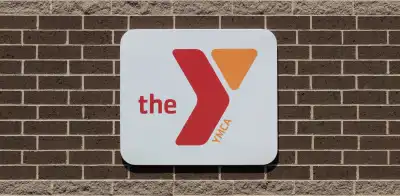Summary
Every leader struggles to set common goals for their teams. Learn how Executive Director of Ariadne Labs, Asaf Bitton, tackles healthcare by uniting diverse perspectives under one roof: impact.
What does Greek Mythology have to do with healthcare? If you ask Asaf Bitton, executive director of Ariadne Labs, he’ll say “a lot.” Ariadne’s legendary ability to solve problems helped Theseus thread to trace his way through the dangerous labyrinth of King Minos. To this day, “Ariadne’s thread” is a symbol for solving a complex problem by applying rigorous logic to all available routes.
Ariadne Labs exists to solve one of the most complex mazes in healthcare: closing the gap between what Bitton describes as “what we have proven, and what we actually do out in the real world.” In academia, it’s called implementation science.
Founded by Atul Gawande in 2012, Ariadne’s team has touched tens of millions of lives with tools that clinicians use to improve over a half-dozen health efforts globally, from improvements in surgery, and childbirth, to primary healthcare.
Breaking through silos
While every organization has leadership challenges, Ariadne’s includes being a hybrid of three types of institutions in one: one part academic, one part healthcare startup, and one part nonprofit. By 2018, they were a team of 100 clinicians, researchers, development officers, and other team members. Silos were inevitable. Articulating common, overarching goals and priorities is especially hard when success to an academic can look totally different from success to a clinician or a grant writer. “One team is speaking PhD language and another is speaking serious illness or surgery language,” says Bitton. “We wanted to impact people by the millions. But we didn’t even have a common language to communicate our goals and our successes among our team, or to our partners across the world.”
With encouragement from Gawande and John Doerr, Bitton hoped implementing Objectives and Key Results (OKRs) would help create a common thread across Ariadne’s maze of efforts. They had KPIs (Key Performance Indicators) already, but no cohesive set of Objectives as an organization. Bitton describes team meetings as “big, 30-foot long white boards where we tracked all our work, and made progress very visible. But we needed to make our impact more visible.”
Ariadne’s first set of OKRs focused around the work of five executives, including the chief medical officer, COO, and executive director. They didn’t yet have organization-wide OKRs, so each executive had a separate OKR, resulting in 5 Objectives and 23 Key Results. “I couldn’t remember all of them,” Bitton says, “and I don’t think anybody else could.”
Each department developed their own OKRs — the primary health care team had one strategy and the surgery team had another — with the executive team responsible for integrating it all. “It was impossible to integrate these strategies because the language didn’t exist,” says Bitton. OKRs ended up being vague, in part because the only common denominator were approval deadlines, as with the first Key Result here:

The other Objectives looked similar, unmeasurable, and siloed in one division or team. It was hard to get excited about a different team’s OKR. If they were the driver of an OKR, why tell anyone else? Shouldn’t they just go and do it?
Going from activity to impact
To truly drive impact across the organization, they would need to radically simplify their OKRs. Before becoming executive director, Bitton had done something similar with Ariadne’s efforts in global primary healthcare. “Sometimes you just need to help a field that’s gotten super convoluted and knotted up,” he says. ”We tried to say, ‘hey, you can conceptualize it as these five things. Those five things can be measured in 32 different ways.’” Getting everyone on the same page helped everyone from clinicians to major funder to quickly identify healthcare gaps and the tools that were successfully reducing them. In turn, it helped Ariadne mobilize resources more quickly — for the first time, everyone could measure how much each gap was closing.
Ariadne came to call that measurement “lives touched,” although it took the academic community a long time to agree on what could be included in that count. “Lives touched” was a hard concept for some to swallow at first. Did it mean lives saved, or did lives improved count? Some impact measures were straightforward, like the number of operating rooms that adopted Aridane’s scientifically proven safety protocols and the number of patients they each cared for. Others were harder. How many people are helped when research is published? A blog post, video or newspaper article had different kinds of impact, but still mattered to their mission of closing gaps in healthcare. Finally, Ariadne decided that if the tools were evidence-based and tested, then there was benefit in using them; every life touched by those tools counted as better, safer healthcare delivery. While each specialty had different ways of counting, each was responsible for promoting knowledge that could save and improve lives. And each method was measurable.
“Lives touched” and “knowledge products” soon anchored Ariadne’s OKRs, says former chief of staff Andrew Juraschek. “We already have commitment around this,” he recalls, “so why don’t we tie that to one of our Key Results?”

Finding a common thread
Juraschek and Bitton took six weeks to develop and socialize the new set of organization-wide OKRs to the extended Ariadne team, using budget deadlines as motivation to keep the process moving quickly. “We’ve got to look at this really simply,” Bitton told everyone, ”And we can only have a total of 10 OKRs… Because 10 is all that we can encompass and remember in our heads.”
For example, the 2019 Program Objective “Drive the impact of Ariadne Labs” became:
One contrast from 2019 was immediately clear: numbers. Being more specific helped to unify the team too. “Getting a strategy approved” had been too vague to rally around, but improving millions more lives in a year was inspiring — and logical. Using the definitions and metrics the team had developed, such as what counted as “lives touched,” “We could actually figure out how we’re tracking,” says Juraschek.
Two additional topline OKRs were set, one around financial stability, and the third for building team and culture. Then Bitton and Juraschek met with every individual team, prompting them to think through their own Objectives and their Key Results by asking:
- How does this OKR make sense to you?
- Where do you see yourself?
- How does this kind of thematic OKR that we’re thinking of map to your particular department and overall company goals?
Ariadne holds organization-wide check-ins three times a year, and each team uses the metrics of the topline OKRs, such as “lives touched” and “knowledge products” to report progress. “We didn’t give much flexibility there, which was new for the organization,” says Bitton, who admits the pushback caused him “a few new gray hairs.” But he was committed to everyone at Ariadne knowing “if your strategy is actually moving the ball forward or not. And it has to be simple,” he says. “I can understand that. I can get behind that.”
In an unprecedented following year, Ariadne had touched 65.2 million lives in 166 countries through 59 new tools, 55 peer-reviewed publications, 2,900 trainees of their programs, and 20,000 downloads of their tools. Their resources for COVID-19 alone reached an additional 7.8 million people.
By 2021, the team decided to dive deeper into the maze by upping the ante, setting even higher numbers for growth. They also challenged themselves to streamline their OKRs even further. “There’s a beautiful summative hierarchy, or tiering quality, of OKRs,” says Bitton. “If you spend the time, they can keep building and building and get to this beautiful parsimony.” In 2021, they surpassed their goal, with nearly 89 million lives touched by their tools and solutions.
Their OKRs for financial stability and workplace culture streamlined too, making the scope of their ambitions and the plans needed to achieve them clearer. Improving healthcare “everywhere in the world” may still be a labyrinthine task, but effective OKRs push organizations to do more than they initially think is possible. “We know we might not attain each one, but we are going to try,” says Bitton.
If you’re interested in starting our OKRs 101 course, click here.



